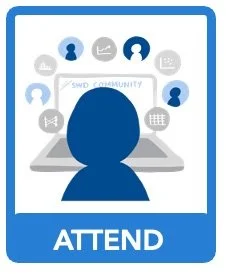WEEK 4: low-tech planning
STEP 1 | Begin your week by joining us for our live lecture
This week, we continue our focus on low-tech planning and introduce one of our favorite processes: storyboarding. Those attending lecture live on Monday, February 3 at 11AM ET will also get an opportunity to develop, share and get feedback on their storyboard for their course project from classmates in a small group setting.
You can watch the low-tech planning lecture recording below:
STEP 2 | Review learning materials
choose a format that will help you learn best–select at least one from the section belowREAD | storytelling with you chapters 3
compile the pieces (pages 45-62)
Now that you’ve taken time to think about your audience and hone your message, it’s time to think about your communication more broadly, including the supporting elements that you will bring into your presentation. You’ll learn a process to help create your plan of attack.
WATCH | low-tech superpowers for data storytelling
viewing time 45:53
See my presentation from Tableau Conference 2019, where I explore ideas for using words to refine pictures and pictures to refine words, the power of asking the simple question, “Why?”, and storyboarding to brainstorm, edit, and organize ideas into a powerful presentation.
LISTEN | SWD podcast episode 45: the power of post-its
listening time 32:17
In this episode, Cole details her penchant for post-it notes and her process of using them to brainstorm, edit, and solicit feedback to create shorter, targeted, and generally more effective communications.
STEP 3 | Submit the weekly synthesize activity
required for certificate of completionSYNTHESIZE | apply this week’s learnings to our course project
Complete the storyboard your course project exercise (only visible to course participants). After submitting yours, browse your classmates’ storyboards and offer feedback.
STEP 4 | Explore optional resources to support your learning
OFFICE HOURS
We’ll have two sessions of office hours this week. These are optional sessions that you can join to ask me questions or chat. Alternatively, if you aren’t able to attend a session this week you can submit a question here.
Meet with Simon on Thursday, February 6 at 4AM ET: register to attend
Meet with Amy on Friday, February 7 at 1PM ET: register to attend
Recommended resources
following lecture dive deeper into topics of your choosing
READ | stickies!
Explore how others storyboard and use stickies. Gain inspiration from this article that showcases submissions to our previous stickies challenge: examples illustrate using this low tech tool for a multitude of scenarios.
LISTEN | SWD podcast episode 5: the beauty of constraints
listening time 43:36
We often complain about the constraints faced when communicating, but constraints can actually be amazing and imposing them intentionally on our work can better equip us to deal with those that are less in our control. Listen in to hear how.
WATCH | Use sticky notes to improve your next presentation
viewing time 11:38
Cole describes her go-to planning strategy for better presentations: storyboarding with post-it notes.
Nice job! You now have a clear goal in mind (your Big Idea) and a plan of attack (your storyboard). This will help to streamline the process of creating content that will effectively get your message across to your audience. We’re super excited to see how your course projects develop and hear your success stories after applying the low-tech planning activities we’ve covered to your daily work.
Next week… We’ll turn our attention back to graphs and cover the simple yet powerful lessons of decluttering and focusing attention. See you then!
PRACTICE | Identify the action for YOUR project
You're getting ready to communicate: what exactly do you want people to actually DO with the information you share? Being clear on the desired audience action can help you better form graphs and slides to galvanize your audience.


